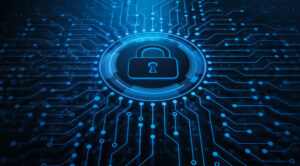In the rapidly evolving landscape of digital education, the role of cybersecurity in K-12 schools cannot be overstated. As educational institutions increasingly rely on technology to facilitate learning, administrative tasks, and communication, they become vulnerable to myriad cyber threats.
From data breaches to ransomware attacks, the consequences of inadequate cybersecurity measures can be far-reaching, impacting not only the school’s operations but also the safety and well-being of its students.
Understanding the Cybersecurity Landscape
Cyber threats targeting K-12 schools have surged in recent years, with malicious actors exploiting vulnerabilities in digital infrastructure to wreak havoc. These threats encompass a wide spectrum, ranging from phishing attempts aimed at stealing sensitive information to sophisticated ransomware attacks that can cripple entire systems. Moreover, the proliferation of Internet-connected devices in educational settings has expanded the attack surface, presenting adversaries with new avenues to exploit.
For these reasons, investing in robust cybersecurity measures is not merely a matter of compliance; it is a fundamental imperative for safeguarding the integrity of educational institutions. Without adequate cybersecurity defenses in place, K-12 schools risk exposing sensitive student and staff data to unauthorized access, potentially leading to identity theft, financial fraud, and reputational damage.
A successful cyberattack can disrupt the school’s operations, disrupting teaching and learning activities and eroding trust within the school community.
Protecting Student Privacy and Safety

One of the most pressing concerns in K-12 cybersecurity is the protection of student privacy. Educational records containing personally identifiable information (PII), such as grades, attendance records, and disciplinary history, are highly coveted by cybercriminals. A data breach compromising such information not only violates student privacy rights but also exposes them to various forms of exploitation, including identity theft and cyberbullying.
Moreover, student safety can be directly compromised by cyber threats. For instance, ransomware attacks targeting school district networks can disrupt critical systems, including those responsible for emergency communications and security protocols. In such scenarios, the ability to respond effectively to safety threats, such as school shootings or natural disasters, may be severely compromised, putting students at greater risk.
Cyberattacks on K-12 schools can also have profound implications for the continuity of education. Disrupted access to digital learning platforms, online resources, and communication channels can impede students’ ability to engage in remote or hybrid learning modalities, particularly in the face of external challenges such as the COVID-19 pandemic. Additionally, the integrity of academic assessments and evaluations may be compromised if digital systems used for grading and test administration are compromised or manipulated.

Beyond the tangible consequences, cyberattacks on schools can also inflict psychological harm on students. The sense of security and trust within the school environment may be shattered, leaving students feeling vulnerable and anxious. Moreover, the loss of personal data or exposure to cyber threats can erode students’ confidence in digital technologies and their ability to navigate online spaces safely, hindering their educational experiences and future opportunities.
The Role of Cybersecurity Resources and Guidelines
Recognizing the multifaceted nature of cybersecurity threats facing K-12 schools, various organizations and government agencies have developed comprehensive resources and guidelines to assist educational institutions in bolstering their cyber defenses. From establishing baseline cybersecurity standards to providing actionable guidance on threat mitigation and incident response, these resources serve as invaluable tools for schools navigating the complex terrain of cybersecurity:
K12 SIX Essentials Series
The K12 SIX Essentials Series , crafted by K-12 IT practitioners for their counterparts, serves as a beacon of cybersecurity standards tailored specifically for U.S. school districts. Rooted in cybersecurity risk management best practices, these essentials provide a robust framework to defend against prevalent cyber threats. Aligned with recommendations from prominent entities such as the FBI and CISA, the series offers actionable guidance and tools essential for bolstering cybersecurity resilience in educational institutions.
Cybersecurity & Infrastructure Security Agency (CISA)
CISA’s Online Toolkit: Partnering to Safeguard K-12 Organizations from Cybersecurity Threats equips educational entities with a roadmap to navigate the complex terrain of cybersecurity. Emphasizing the necessity of a continuous security program, the toolkit outlines key recommendations and action steps essential for building, operating, and maintaining resilient cybersecurity programs. From prioritizing impactful security measures to fostering collaboration and information sharing, each recommendation is accompanied by curated resources aimed at empowering schools in their cybersecurity journey.
SchoolSafety.gov
As the digital landscape evolves, SchoolSafety.gov emerges as a vital resource hub offering actionable insights to fortify the cyber defenses of educational institutions. Recognizing the escalating threat landscape targeting K-12 schools, SchoolSafety.gov emphasizes the imperative of proactive cybersecurity measures. From defending against cyber threats to fostering a culture of cyber safety, the resources curated by SchoolSafety.gov serve as a comprehensive arsenal for schools striving to mitigate cybersecurity risks.
U.S. Office of Educational Technology
Acknowledging the burgeoning significance of cybersecurity in educational settings, the U.S. Department of Education provides a repository of resources aimed at addressing this critical concern. Through various technical assistance initiatives, the Department endeavors to equip both K-12 and higher education institutions with the necessary tools and knowledge to navigate the intricacies of cybersecurity. By consolidating relevant resources, the Office of Educational Technology underscores the importance of proactive cybersecurity measures in safeguarding educational environments.
Readiness and Emergency Management for Schools Technical Assistance Center (REMS TA)
In an era marred by evolving cyber threats, the REMS Technical Assistance Center advocates for a proactive approach to cybersecurity preparedness in educational institutions. Through comprehensive planning and integration of cybersecurity protocols into emergency management frameworks, schools and higher education institutions can effectively mitigate the potentially devastating consequences of cyber incidents. By leveraging high-impact strategies and federal resources, educational entities can foster a resilient cybersecurity posture conducive to safe and uninterrupted learning environments.
Department of Homeland Security (DHS)
The Department of Homeland Security, cognizant of the escalating cyber warfare landscape, offers invaluable resources to fortify the cyber defenses of educational institutions. By preparing for potential cyber incidents and bolstering cyberspace resilience, schools and higher education entities can mitigate the risks posed by cyber threats. Through strategic utilization of DHS resources, educational institutions can safeguard critical infrastructure and ensure the uninterrupted delivery of education services.
The Importance of Cybersecurity in Schools
In an age where digital literacy is paramount, cybersecurity emerges as the cornerstone of educational integrity. Cyber threats not only jeopardize sensitive data but also undermine the trust and safety of educational environments. By embracing cybersecurity best practices and leveraging the wealth of resources available, educational institutions can fortify their digital defenses and uphold their commitment to providing safe and uninterrupted learning experiences.
The integration of resources offered by various organizations underscores the collective commitment to safeguarding education from cyber threats. By harnessing these resources and prioritizing cybersecurity initiatives, educational institutions can navigate the digital landscape with confidence, ensuring the safety and security of students, educators, and stakeholders alike. ■
















